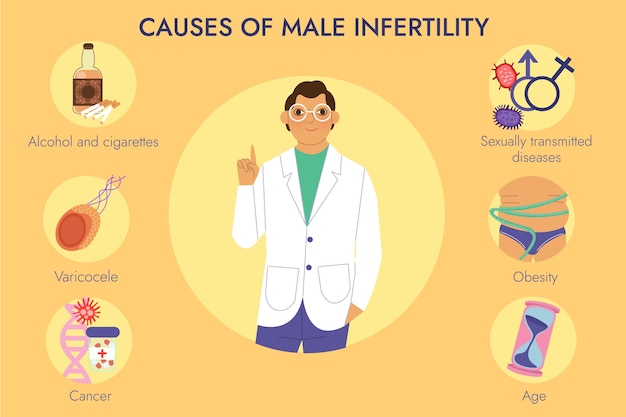
Male hypogonadism is a medical condition where the body doesn’t produce enough testosterone, a crucial hormone that influences male development during puberty and sperm production. This condition can be present from birth or develop later in life due to factors like injury, infection, or genetics. Testosterone replacement therapy can treat certain types of hypogonadism.
Understanding Male Hypogonadism:
Testosterone is important for male growth during puberty and sperm production. Hypogonadism occurs when the testes fail to produce adequate testosterone, affecting one or both testes. This condition is observed in older patients but can also result from infections or injuries. It can appear at birth, during puberty, or in adulthood, with symptoms varying depending on the age of onset and underlying cause.
Symptoms:
Male hypogonadism can manifest at different stages: adulthood, pre-teens, or during fetal development. For fetuses, it can lead to underdeveloped genitals, ambiguous genitalia, or female genital features. Pre-teens with the condition might experience abnormal puberty, including less masculine voice, improper genital growth, abnormal body hair, and breast tissue development. In adults, it affects reproductive functions, causing low muscle mass, gynecomastia, osteoporosis, infertility, erectile dysfunction, and abnormal hair growth. Additional symptoms due to low testosterone include concentration issues, fatigue, low sex drive, and hot flashes.
Causes:
The condition results from decreased activity in the gonads, which in men are the testes. The testes produce several hormones, including testosterone, vital for sexual, cognitive, and physical development. Hypogonadism can be caused by disorders in the testes, hypothalamus, or pituitary gland.
Primary Hypogonadism:
This type is due to problems in the testicles. Causes include:
1. Klinefelter’s Syndrome: A genetic condition where males have extra X chromosomes, affecting testicular development and testosterone production.
2. Undescended Testicles: The condition where testicles don’t descend at birth, leading to reduced testosterone if not corrected early.
3. Mumps Orchitis: Infection causing long-term testicular damage and impaired testosterone production.
4. Hemochromatosis: Excessive iron in the blood damaging the testes or pituitary gland.
5. Cancer Treatments: Chemotherapy or radiation can impair testosterone and sperm production, though fertility might return post-treatment.
6. Normal Aging: Testosterone production naturally decreases with age, affecting around 30% of men over 75.
Secondary Hypogonadism:
This occurs due to issues in the pituitary gland or hypothalamus. Causes include:
1. Kallmann Syndrome: Impaired hypothalamus development affecting hormone release.
2. Pituitary Disorders: Tumors or treatment of brain tumors can impair hormone production.
3. Inflammatory Diseases: Conditions like tuberculosis or sarcoidosis impacting the hypothalamus or pituitary gland.
4. HIV/AIDS: The virus affects testosterone levels by impacting the hypothalamus, pituitary, and testes.
5. Medications: Certain drugs can reduce hormone production.
6. Obesity: Linked to lower testosterone levels.
Brain Influence:
The brain’s cerebral cortex initiates testosterone production by signaling the hypothalamus, which releases a hormone stimulating the pituitary gland. This gland secretes hormones that signal the testes to produce testosterone. Any disruption in this process can cause hypogonadism.
Testing and Treatment:
Early diagnosis is crucial, especially in young boys, to prevent delayed puberty and associated issues. Diagnosis involves blood tests to check testosterone levels, semen analysis, hormone testing, genetic studies, and imaging tests like ultrasounds or MRIs.
Testosterone Replacement Therapy (TRT) is the main treatment, administered through gels, patches, or injections. It helps restore testosterone levels, improving libido, mood, bone density, and overall quality of life. Side effects include increased blood pressure, acne, skin irritation, and potential cardiovascular risks.
Lifestyle Changes:
Maintaining a healthy weight, regular exercise, adequate sleep, and avoiding smoking can help maintain normal testosterone levels. Regular medical evaluations are necessary for those undergoing TRT.
Conclusion:
Male hypogonadism can arise at any age, affecting physical, mental, and sexual health. Early diagnosis and treatment are essential to manage symptoms and prevent further complications. Various treatment options are available to cater to individual needs, ensuring a better quality of life for those affected.